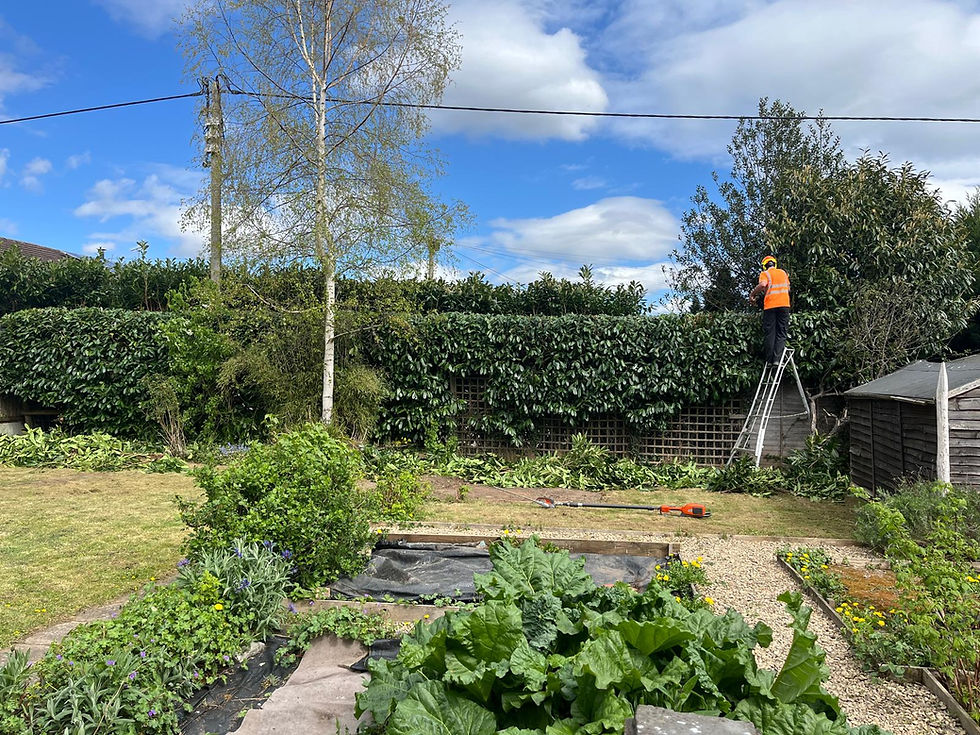Understanding Tree Preservation Orders (TPOs) and Conservation Areas: What You Need to Know
- Alt Arb Ltd
- May 20
- 3 min read
Expert Tree Surgeons in Newent & Gloucester
At Alt Arb, we’re passionate about protecting the trees that make our communities greener, healthier, and more beautiful. But did you know that some trees are legally protected, and cutting them back—or even pruning them—without permission can lead to hefty fines?
This month, we’re focusing on Tree Preservation Orders (TPOs) and conservation areas, explaining what they are, how they affect homeowners and businesses, and what to do if you need work carried out on a protected tree.
What Is a Tree Preservation Order (TPO)?
A Tree Preservation Order is a legal protection placed by your local council to preserve individual trees, groups of trees, or entire woodlands. These orders are typically made when a tree has amenity value—in other words, it plays an important role in the local environment, landscape, or community.
If a tree is under a TPO, you cannot prune, fell, uproot, or damage it in any way without written permission from your local authority.
Do TPOs Affect Residential Properties?
Yes. Many homeowners are surprised to find that even a tree in their back garden might be protected. Whether you’ve just moved into a new property or you’re planning garden renovations, it’s essential to check for TPOs before carrying out any tree work.
You can find out if a tree is protected by contacting your local council’s planning department or using their online mapping tools.
What About Businesses or Commercial Premises?
TPOs also apply to trees on business premises, office parks, and commercial developments. For businesses, maintaining the landscape often supports your brand image and customer appeal—so keeping trees healthy while staying compliant is crucial.
Alt Arb works with local businesses to carry out tree inspections and apply for permissions when work is needed on protected trees, reducing legal risk and maintaining your site’s safety and aesthetics.
Trees in Conservation Areas
Even if a tree doesn’t have a TPO, it may still be protected if it’s in a conservation area—a designated zone that preserves historic or architecturally significant neighbourhoods.
In conservation areas, you must give the local authority at least six weeks’ notice before carrying out any tree work on trees with a trunk diameter of 75mm or greater at 1.5m above ground level.
These trees automatically fall under the same legislation as TPO-protected trees for the duration of the notice period.
Failure to notify can lead to prosecution—even if you didn’t realise the tree was protected.
What You Can (and Can’t) Do:
Here’s a quick reference guide:
Always consult a professional before starting tree work—we can help you determine what’s allowed and manage the application process on your behalf.
How Alt Arb Can Help
At Alt Arb, we’re experienced in working with protected trees across Gloucestershire.
We can:
Check if your tree has a TPO or falls within a conservation area
Submit tree work applications to the local council
Carry out all approved work safely and professionally
Provide ongoing tree care and inspections to keep your trees healthy
If you’re unsure whether your trees are protected—or you need advice on managing them—get in touch with our friendly team today. Whether you’re a homeowner, landlord, or local business, we’ll help you stay compliant while keeping your trees in great shape.







Comments